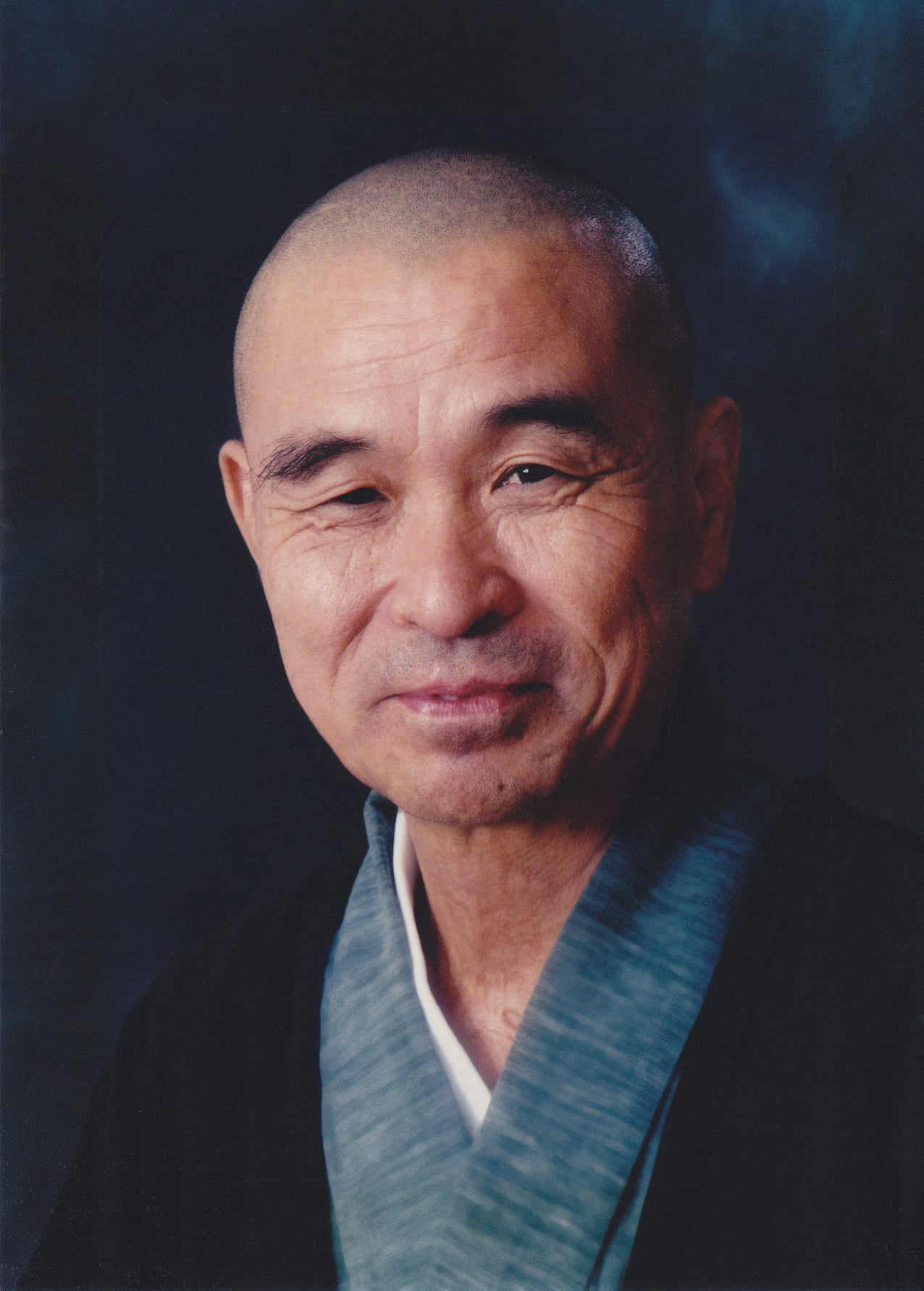
White Plum Asanga member Tenkei Coppens Roshi writes …
Baigaku Junyu Kuroda Roshi, a younger brother of Maezumi Roshi, and better known to most as ‘Hojo-san”, was the abbot of two temples — Kirigayaji in Tokyo and Fujidera in Gotemba, close to Mount Fuji. Over the years, and assisted by a team of very loyal staff members (dowakai), he built up a community (danka) of about 2000 members. Born and raised in Koshinji, the Kuroda family temple in Otawara, Hojo-san graduated from Komazawa University in 1963 and received Shiho from his father in 1968. In addition to traditional Sodo training in Sojiji, he completed a special course there that qualified him as a Zen master in 1970. After that he traveled widely and, for example, in 1974 attended the second World Conference of Religions in Belgium and met with Paulus VI in the Vatican, and in 1979 he visited Thailand. Later on, he developed a special connection with Bhutan and also China, and served as a conduit for the international Buddhist sangha without any sectarian sentiment.
From 1973 on Hojo-san often went to the US to support Maezumi Roshi in the Zen Center of Los Angeles where he was, as Tanto, in charge of training in Zen procedures. In turn, Maezumi Roshi would always stay with Hojo-san in Kirigayaji during his annual visits to Japan where he connected with family, colleagues and officiated at funerals. Together they would discuss the future of international Zen Buddhism. Over time, Hojo-san became an important bridge between East and West and his role was all the more relevant after his brother passed away. He came into his own as a dharma teacher and poured his indomitable energy into supporting Zen centers and priests all over the world. His kindness and generosity were exemplary, and he touched the hearts of so many people. Yet, he used to say, “I have no extra, no luggage. Just I am I.”
Hojo-san was married to Tamiko, also a great supporter of Maezumi Roshi. Together they had two daughters, Keiko and Hitomi, and three grandchildren. Hojo-san gave dharma transmission to eight successors: Nishimaki Taijun, Kono Seiho, Nakamura Shokan, and Baiyu Matsubara from Japan, Enjo Stahel from Brazil, Kanzen Maslankowski and Hojun Szpunar from Poland, and Ingrid Shugetsu Appels from The Netherlands who became his close companion after his divorce. Hojo-san was also the Soto Shu transmission registration teacher for Seisen Saunders and Egyoku Nakao from the USA. Although formally not his successors, Shingetsu Coen from Brazil, and Tenkei Coppens and Myoho Gabrysch from The Netherlands developed a deep connection with Hojo-san since they lived and practiced extensively with him in Japan.
In 2010 Hojo-san became Gondai Kyoshi or Vice-President of the Japanese Soto School, and in 2012 he received the title of Daikyoshi, which is one of the highest ranks in the school. He passed away peacefully at home in Kirigayaji, surrounded by family, after he had been sick for quite some time. He will be sadly missed by many of us. According to Hojo-san’s wish, the farewell ceremony and cremation were attended only by the closest family. The official funeral will take place sometime next year. The new abbot of Kirigayaji is his faithful longtime assistant, Rev. Yodo Yamamoto.
Hojo-san had written the following death poem:
Eighty two years,
Some were good, some were bad
Like this! Like this!
In my dreams I am a pilgrim, like Sudhana!
The Dharmakaya never dies
The True Man lives forever
Kirigaya Junyu, a ragged Zen monk
